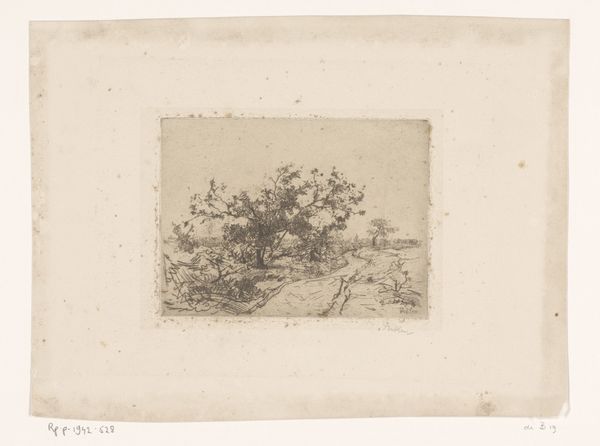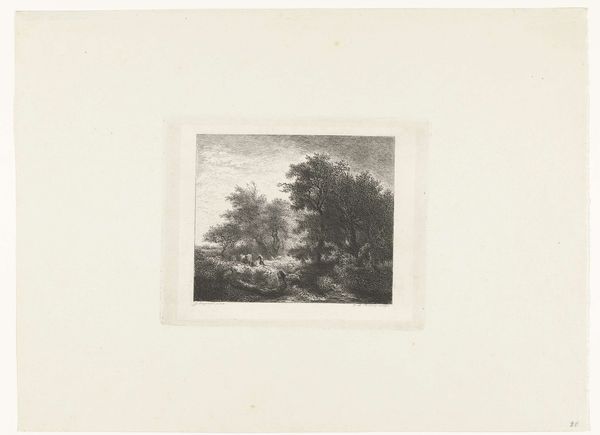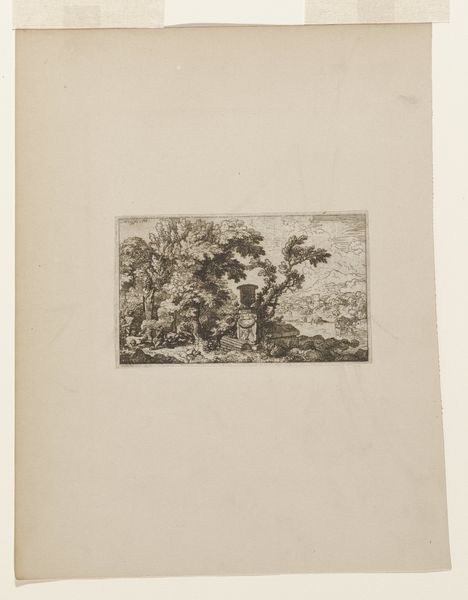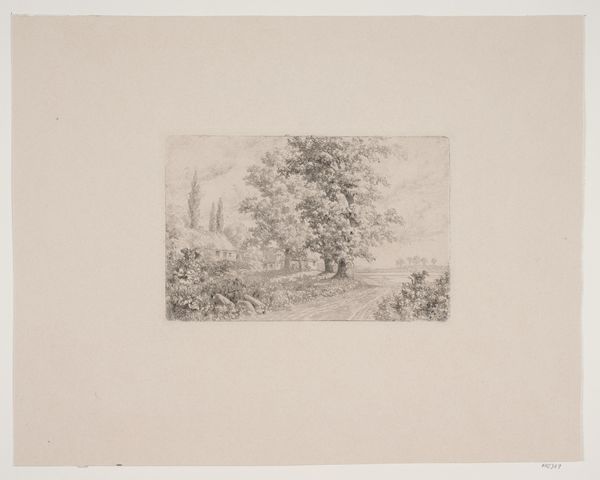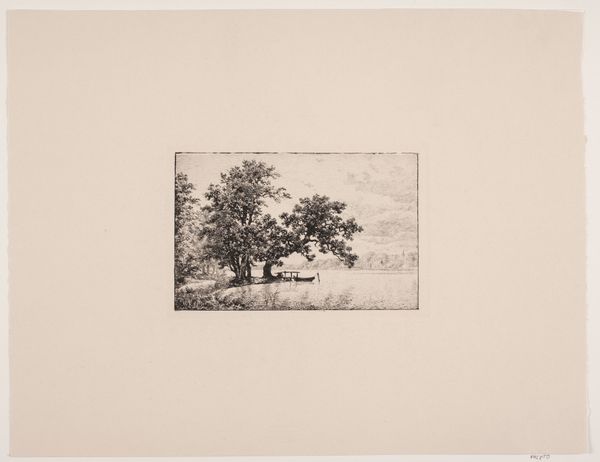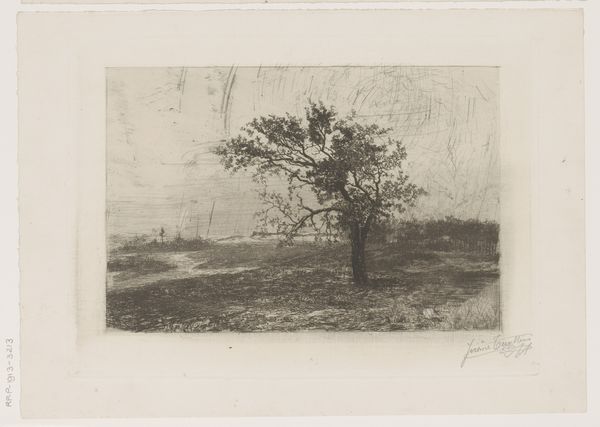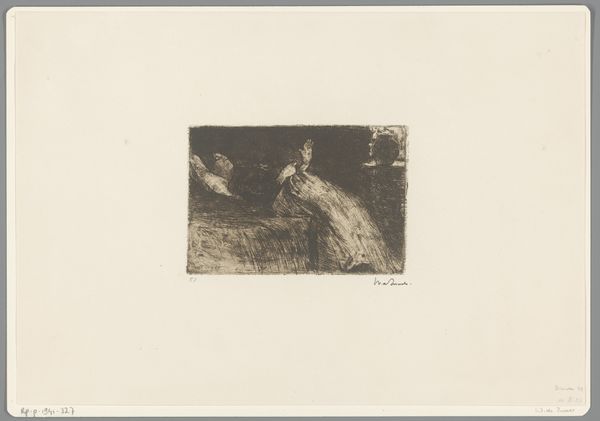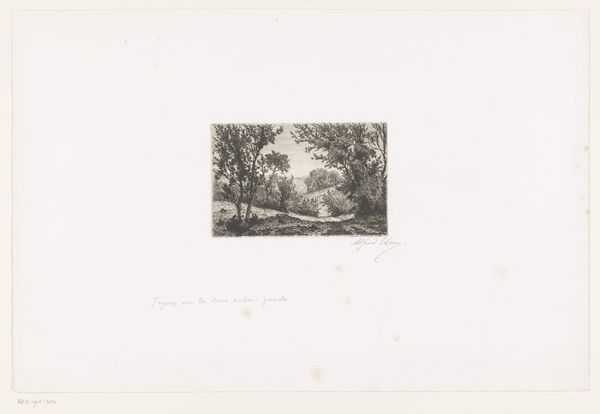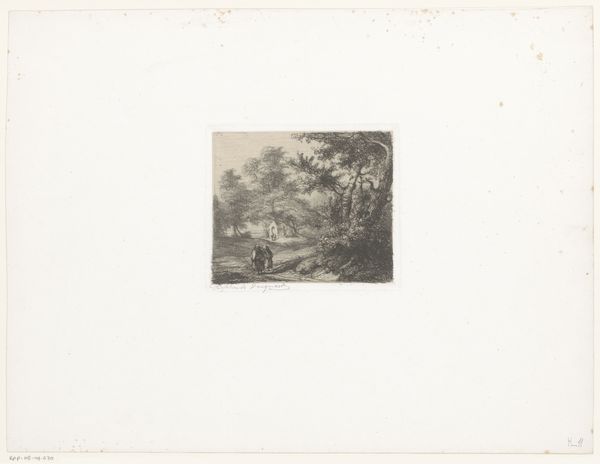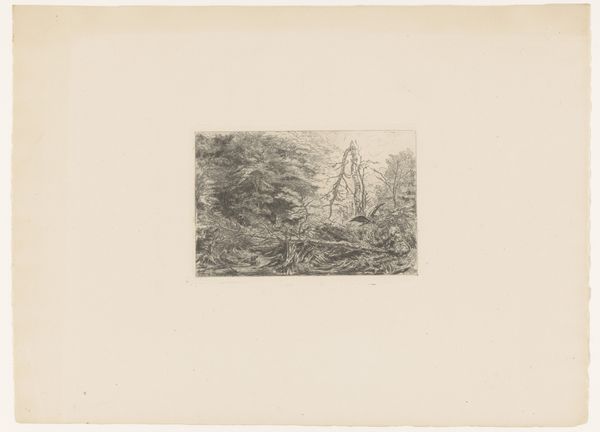
drawing, print, etching, paper
#
drawing
# print
#
etching
#
landscape
#
paper
#
plant
#
realism
Dimensions: height 158 mm, width 220 mm
Copyright: Rijks Museum: Open Domain
Curator: I’m immediately struck by the almost photographic realism in this piece. The textures, especially in the tree bark, are so meticulously rendered. Editor: Indeed. We are looking at "Pioenrozen bij een boom" created by Jules Ferdinand Jacquemart in 1862. It’s an etching, a printmaking process that involves using acid to create lines in a metal plate, which is then inked and printed onto paper. Curator: The botanical detail is incredible for an etching of this size, almost scientific in its precision. The blossoms and leaves have a weight and volume despite being monochrome. I am curious, do we know how Jacquemart managed to reach this effect using only lines and their density? Editor: He was a master of his materials. Etching allows for fine lines and a range of tonal effects through varied bite depths. The cultural and economic context is important here, though: consider the rising demand for detailed botanical studies during this period, tied to colonial expansion and the scientific classification of nature. Prints were a primary vehicle for circulating such imagery. Curator: And there is an undeniable contrast between the transience of the flowers, symbols of fleeting beauty, and the age, the steadfastness of the tree trunk, it introduces a dimension of melancholy to this image, this is reinforced by the way the flower is detached. From where does the subject take origin, where these flower still lives in proximity. Editor: Melancholy perhaps, but also a kind of productive tension. I see the interplay between the organic subject matter and the industrial process of printmaking reflecting broader societal shifts: the burgeoning industrial revolution coupled with a romanticized view of the natural world. Curator: So, by examining the interplay between nature, labor, and artistic skill, we gain a broader understanding of this print, its creator and the society he lived in. Editor: Exactly! Close attention to both Jacquemart’s skill as a craftsman and to his environment are keys for us.
Comments
No comments
Be the first to comment and join the conversation on the ultimate creative platform.
